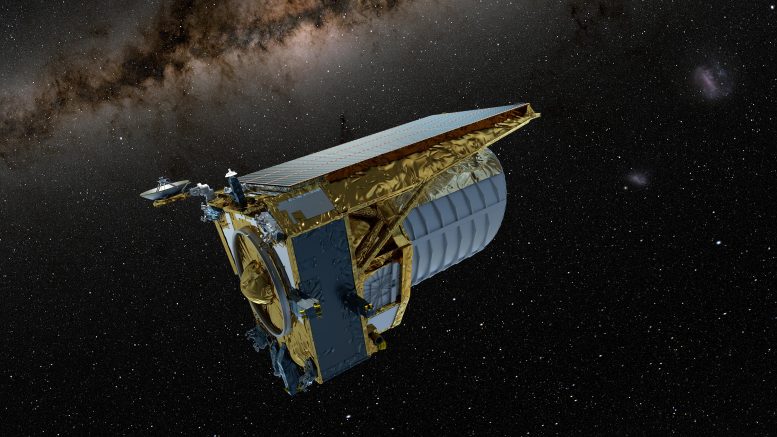
Artist’s impression of the Euclid mission in space. Euclid is designed to look far and wide to answer some of the most fundamental questions about our Universe: What are dark matter and dark energy? What role did they play in the formation of the cosmic web? The mission will catalog billions of distant galaxies by scanning across the sky with its sensitive telescope. Credit: ESA
Euclid has found its ‘lost’ guide stars as a software patch has solved its navigation woes and the next six years of observation schedules have been redesigned to avoid stray sunlight: it’s the end of an interesting commissioning phase and Euclid will now undergo its final testing in full ‘science mode’.
For a few months, ESA’s dark Universe detective wasn’t quite right. It arrived smoothly at Lagrange point 2, focussed its telescope mirror, and captured its first mesmerizing test images. It soon became clear, however, that the mission was experiencing some hiccups.
Most worrying was Euclid’s Fine Guidance Sensor which was at times not finding its guide stars – fundamental for the mission to point precisely at desired regions of the sky.
Our very own Sun got in the way as, during periods of high solar activity, it ejects protons that intermittently strike the Sensor’s detectors creating signals that the Sensor mistakenly interpreted as real stars. To a lesser degree, stray sunlight and X-rays also interfered with Euclid’s observing instruments.
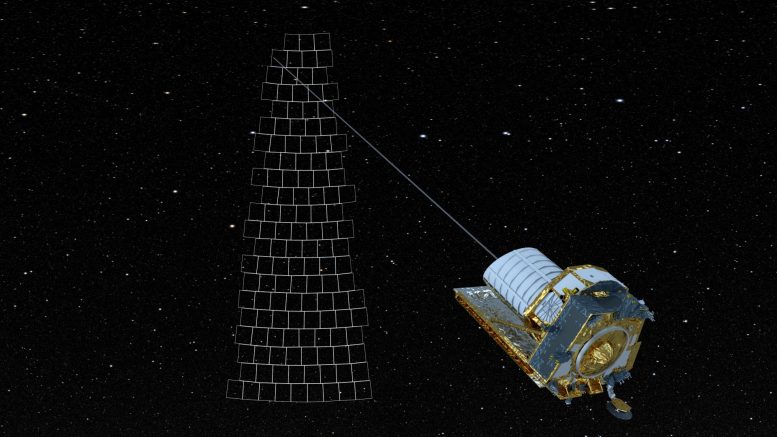
Euclid scans across the night sky using a ‘step-and-stare’ method, combining separate measurements to form the largest cosmological survey ever conducted in the visible and near-infrared. Each time Euclid ‘stares’, its telescope points to a position in the sky, performing imaging and spectroscopic measurements on an area of approximately 0.5 deg² around this position. After each stare, the telescope shifts (or ‘steps’) to a new position. Credit: ESA
Addressing Spacecraft Challenges in the Commissioning Phase
The ‘commissioning phase’ is the period when a mission designed and tested on Earth meets the reality of space – there are always kinks to iron out and unexpected twists and turns. Teams at ESA’s mission control worked in 12-hour shifts to give Euclid round-the-clock care during this phase, collaborating with scientists and industry to prepare a spacecraft for its new environment and mission ahead.
After incredible work and ingenuity from teams across Europe – including many long nights – Euclid’s Fine Guidance Sensor has been updated and tested for ten days in orbit, and everything is looking good. With its guide stars found, Euclid will now fully resume the all-important Performance Verification phase; its final test before it’s let loose on the dark Universe.
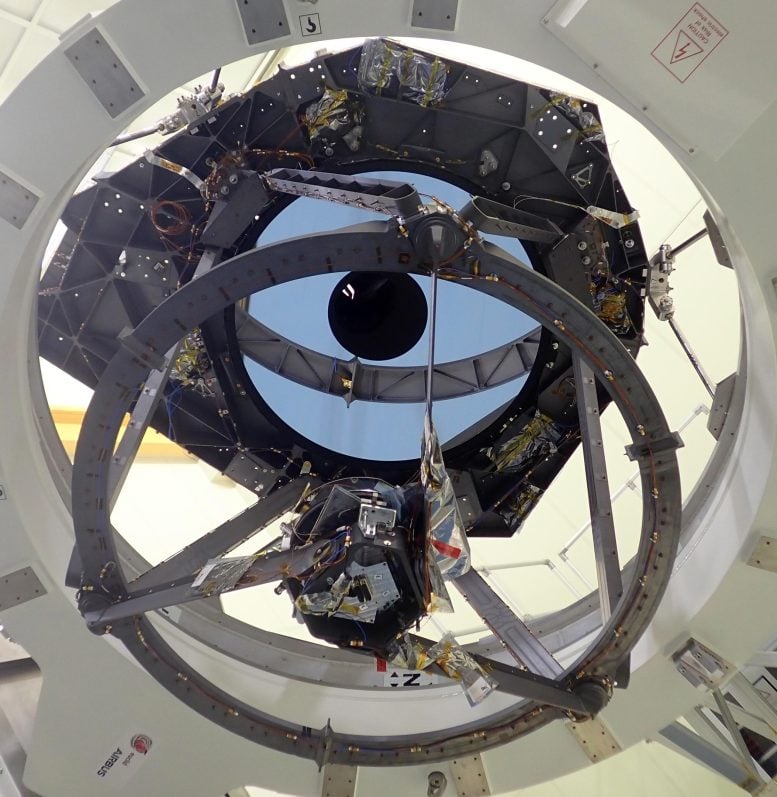
The 1.2-m diameter main mirror of ESA’s Euclid mission to unveil the dark Universe, seen during assembly, integration, and testing. Using this mirror, the spacecraft will map the 3D distribution of billions of galaxies up to 10 billion light years away – looking beyond the Milky Way galaxy to image around a third of the observable Universe. By revealing the Universe’s large-scale structure, and its pattern of expansion, the mission will cast light on the mysterious dark energy and dark matter making up 95% of the cosmos. Credit: Airbus
Fine-Tuning Euclid’s Instruments
Euclid’s Fine Guidance Sensor (FGS) is a completely new development in Europe, and it is responsible for ensuring the mission points with precision, performing all the ‘slews’ (rotations) that a six-year survey mission requires.
The FGS is an onboard instrument equipped with optical sensors that image the sky from the sides of the ‘field of view’ of Euclid’s VISible instrument (VIS). The sensor uses guide stars to navigate and feeds this data into the spacecraft’s Attitude and Orbit Control System to orient and maintain the telescope’s precise pointing.
Before launch, the Sensor was rigorously tested, but nothing compares to the true sky under real space conditions. Cosmic rays – high energy radiation originating from the Universe and from solar flares from our Sun – sometimes caused ‘artifacts’ or false signals to appear in Euclid’s observations. These false signals intermittently outnumbered real stars and Euclid’s Sensor failed to resolve star patterns that it needed to navigate. This led to some interesting test results!
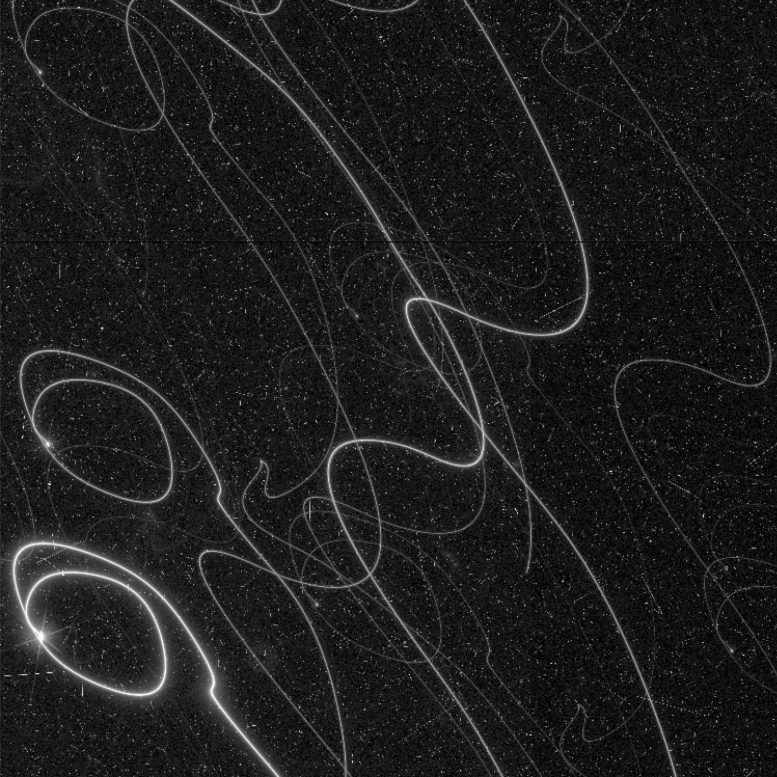
Loopy star trails show the effect of Euclid’s Fine Guidance Sensor (FGS) intermittently losing its guide stars. The FGS is an onboard instrument equipped with optical sensors that image the sky from the sides of the ‘field of view’ of Euclid’s VISible instrument (VIS). The sensor uses guide stars to navigate and feeds this data into the spacecraft’s Attitude and Orbit Control System to orient and maintain the telescope’s precise pointing. Credit: ESA / Euclid Consortium / TAS-I, CC BY-SA 3.0 IGO
The most ‘loopy’ show an extreme case of Euclid failing to lock into place while observing a star field, resulting in an image of swirling star trails and ‘lassos’ as the spacecraft tried to home in on its target. Clearly, to reveal hard-to-see, subtle patterns in distant galaxies and star clusters, this won’t do. Teams got to work to come up with a fix.
Software Patch and Collaboration to the Rescue
To address this, teams developed a software patch. It was initially tested on Earth with an electric model of Euclid and a simulator, then for ten days in orbit. The signs were positive, as more and more stars revealed themselves.
“Our industrial partners – Thales Alenia Space and Leonardo – went back to the drawing board and revised the way the Fine Guidance Sensor identifies stars. After a major effort and in record time, we were provided with new on-board software to be installed on the spacecraft,” explains Micha Schmidt, Euclid Spacecraft Operations Manager.
“We carefully tested the software update step by step under real flight conditions, with realistic input from the Science Operations Centre for observation targets, and finally the go-ahead was given to re-start the Performance Verification phase.”
Giuseppe Racca, Euclid Project Manager adds: “The performance verification phase that was interrupted in August has now fully restarted and all the observations are carried out correctly. This phase will last until late November, but we are confident that the mission performance will prove to be outstanding and the regular scientific survey observations can start thereafter.”
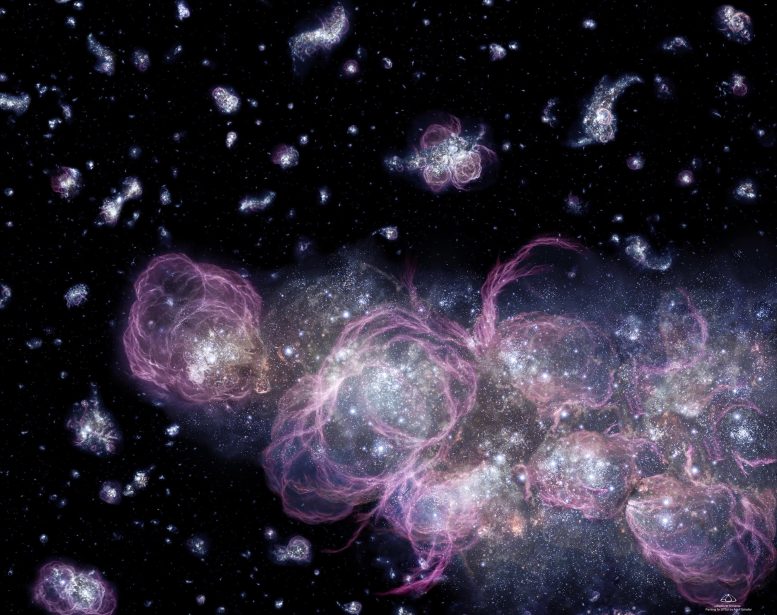
This is an artist’s impression of how the very early Universe (less than 1 thousand million years old) might have looked when it went through a voracious onset of star formation, converting primordial hydrogen into myriad stars at an unprecedented rate. The sky then would have looked very different from the sea of quiescent galaxies around us today. The sky is ablaze with primeval starburst galaxies. Giant elliptical and spiral galaxies have yet to form. Within the starburst galaxies, bright knots of hot blue stars come and go like bursting fireworks shells. Regions of new starbirth glow intensely red under a torrent of ultraviolet radiation. The most massive stars self-detonate as supernovas, exploding across the sky like firecrackers. A foreground starburst galaxy in the bottom right corner is sculpted with hot bubbles from supernova explosions and torrential stellar winds. There is very little dust in these galaxies since heavier elements have not yet been made through nucleosynthesis in stars. Astronomers think that the first stars in the Universe appeared in an abrupt eruption of star formation, rather than at a gradual pace. Credit: A. Schaller (STScI)
The Quest to Understand the Dark Universe
Euclid’s mission is to answer some of the most fundamental scientific questions we have about the nature of our Universe: what are the elusive dark matter and dark energy that allegedly make up 95% of our Universe, and yet have never been seen? How valid is general relativity on cosmic scales? How did the Universe take shape after the Big Bang?
Euclid’s survey will observe one-third of the entire sky, looking back 10 billion years to help us understand the physics of the early Universe and the formation of cosmic structures.
By measuring with unprecedented accuracy, the shapes of billions of galaxies over billions of years of cosmic history, Euclid will provide a 3D view of the dark matter distribution in our Universe. The map of the distribution of galaxies over cosmic time will teach us about dark energy, which affects the spatial evolution of the Universe’s large-scale structure.
ESA’s Euclid mission will create a 3D map of the Universe that scientists will use to measure the properties of dark energy and dark matter and uncover the nature of these mysterious components. The map will contain a vast amount of data, it will cover more than a third of the sky and its third dimension will represent time spanning 10 billion years of cosmic history. Credit: ESA/Euclid Consortium/Cacao Cinema
To make this possible, Euclid has one of the most precise and stable telescopes ever launched. It will provide razor-sharp images and deep spectra of our Universe, changing its focus every 75 minutes for its mission duration of six years – ‘pointing’ more than 40,000 times.
“I want to thank all our teams of experts involved in successfully completing the challenging commissioning phase, including the Euclid Consortium, engineers, and industry,” concludes Carole Mundell, ESA’s Director of Science.
“Now comes the exciting phase of testing Euclid in science-like conditions, and we are looking forward to its first images showcasing how this mission will revolutionize our understanding of the dark Universe.”

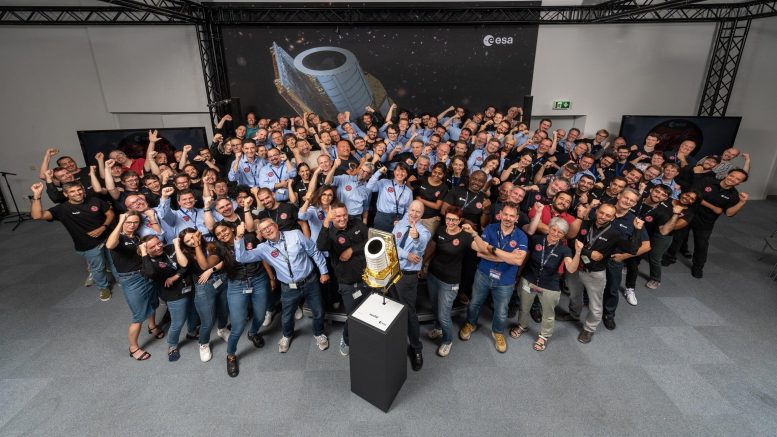
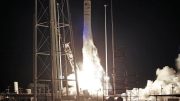
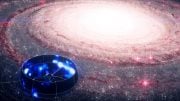
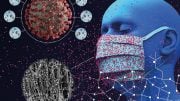
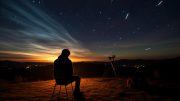

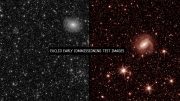

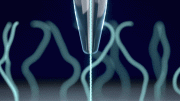
Be the first to comment on "Euclid’s Starry-Eyed Solution: Navigating the Dark Universe’s Mysteries"